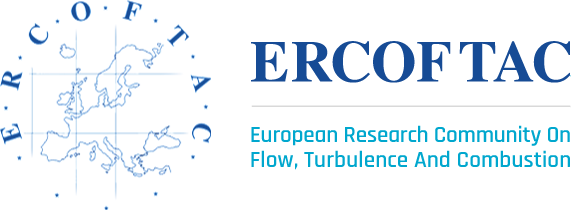
Prof. Paola Cinnella
We are delighted to feature Paola Cinnella in our Women in ERCOFTAC series, who is coordinating ERCOFTAC’s latest Special Interest Group, SIG 54 “Machine Learning in Fluid Dynamics”.
Currently, at the Sorbonne in Paris, where she is affiliated with Institut Jean Le Rond D’Alembert.
Paola’s research field is in Computational Fluid Dynamics. Her key focus is on compressible and turbulent flows
but she has also worked on related topics, such as shape optimization, uncertainty quantification in CFD,
and data-driven modelling.
Read on to find out more about Paola’s career so far, research projects, and advice to women in STEM.
What is your academic background?
Following my Master’s Degree in Fluid Mechanics from Ecole Nationale Supérieure d’Arts et Métiers (ENSAM) in Paris, I completed a PhD on high-order numerical schemes, with application to unsteady compressible and turbulent flows past oscillating airfoils, under the supervision of Prof. Alain Lerat.
After a Postdoc on aeroelastic phenomena in turbomachinery, I joined the Faculty at Unversità del Salento (Lecce, Italy, in 2001, working on new research activity on the dynamics of dense gases (related to SIG 49, Non-Ideal Computational Fluid Dynamics), their optimization, and the quantification and reduction of thermodynamic uncertainties using Bayesian inference.
In 2008, I obtained a professorship at ENSAM Paris, where I continued working on high-order methods, compressible turbulent flows of perfect and real gases, uncertainty quantification, and data-driven techniques.
What projects are you working on currently?
One project I’m involved in is MAMBO, a collaboration with Airbus and ArianeGroup on the development of mesh and scheme order adaptation (hp adaptation) of a family of k-exact finite volume schemes for highly compressible flows.
I am also coordinating (for France) a Franco-German project called REGAL-ORC, in collaboration with ENSAM, the University of Muenster, and the University of Illmenau. The project aims at producing very detailed numerical and experimental data of transition and turbulence in dense gases, with a focus on turbine configurations. The data is designed to help develop improved loss models.
Finally, I am collaborating with ENSAM and with Safran Tech on data-driven turbulence modelling using machine learning.
Was there a woman who inspired you to get into your field?
When I started, CFD was essentially a field for men. Still today, CFD conferences are mostly attended by men. A woman who inspired me is Dr. Helen Yee, from NASA Ames, who did wonderful work on high-order numerical schemes for real-gas flows. I also have high regard for Prof. Maria Vittoria Salvetti.
What motivates you to work on fluid mechanics?
I am rather eclectic. CFD is a transversal discipline at the crossroads of applied mathematics, fluid mechanics, computer science, and engineering.
Numerical simulation gives us access to a lot of information unreachable by experiments and to speculate on poorly known physical phenomena while having in sight the validation by experience and the application to the improvement of aerodynamic performance.
What advice would you give to young women wanting to get into STEM?
Do not censor yourself - you can do anything you want. We need more women in STEM; their creativity and different ways of doing things.
As a mother of four, I had to strive to overcome the societal pressure of being the stereotypical “perfect” mother”. But I think my children are happy and proud of me.
Of course, doing scientific research in STEM is another story: you need to be kind of a “warrior” (and quite a bit of a nerd). But it is also very rewarding!
What are the benefits of being a member of ERCOFTAC?
Being a member of ERCOFTAC opens access to a very rich community of researchers through the SIGs, high-level thematic conferences and workshops, as well as rich databases. ERCOFTAC actively contributes to shaping fluid dynamics research in Europe and beyond.
I also have the opportunity of coordinating the new SIG54 “Machine Learning in Fluid Dynamics”, and I look forward to fruitful discussion and collaborations around such an incredibly exciting topic!
Thanks Paola for your interesting insights! You can find out more about the exciting new SIG 54 here.
